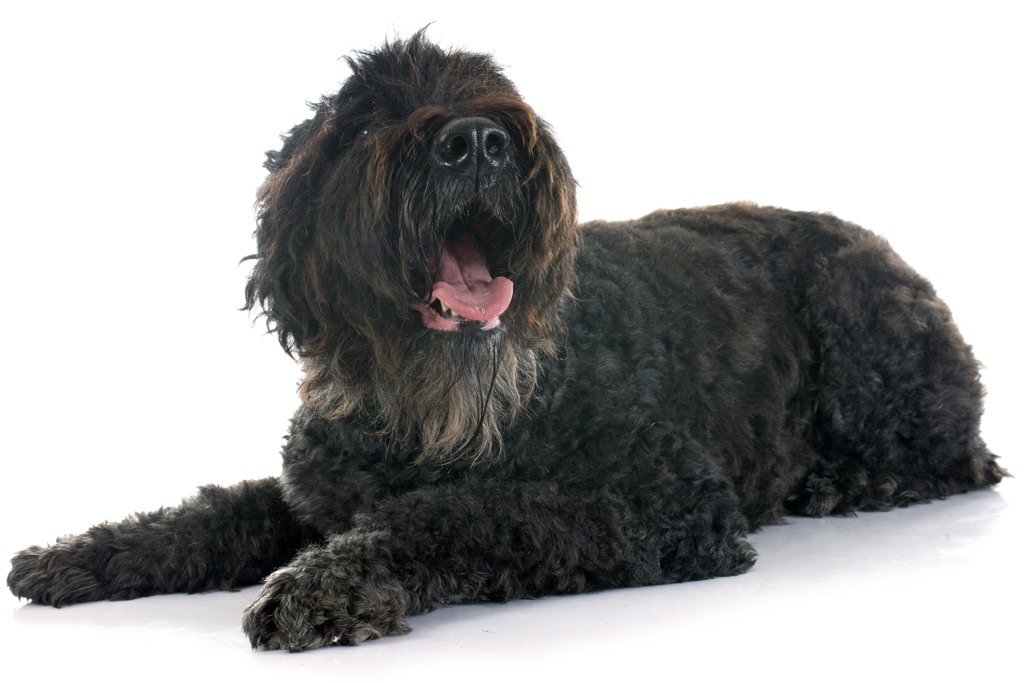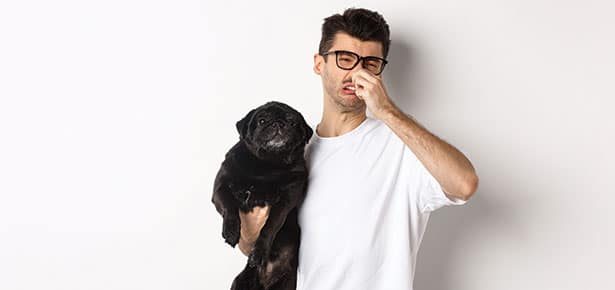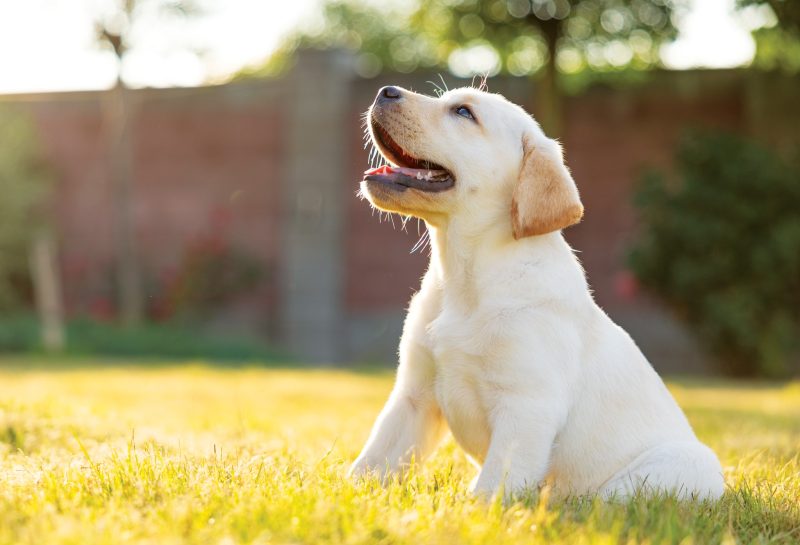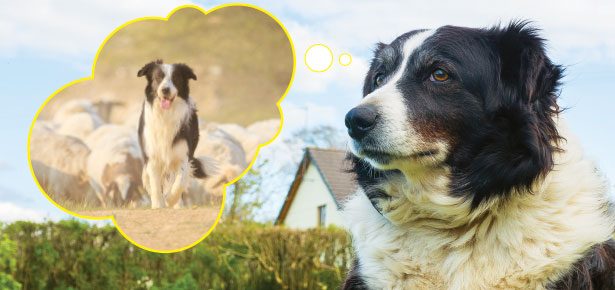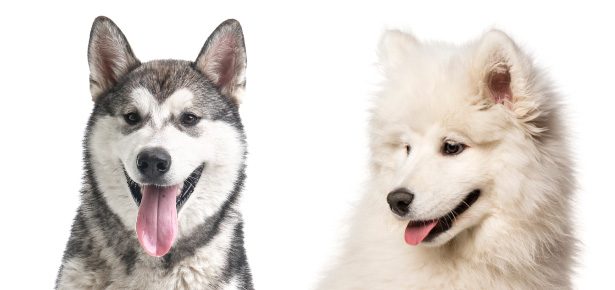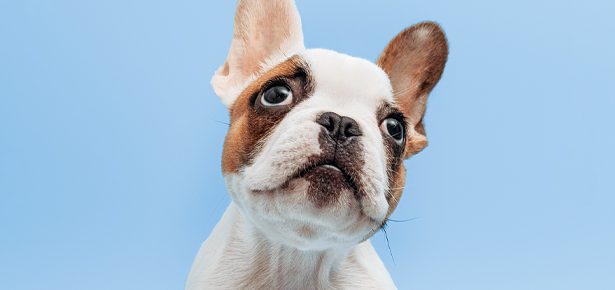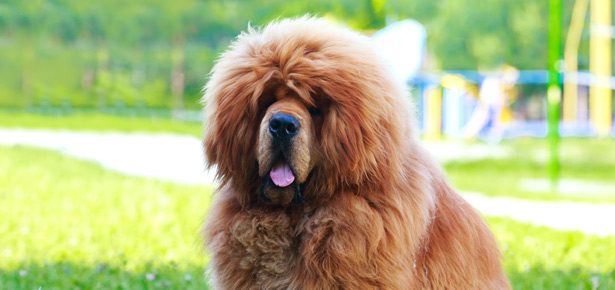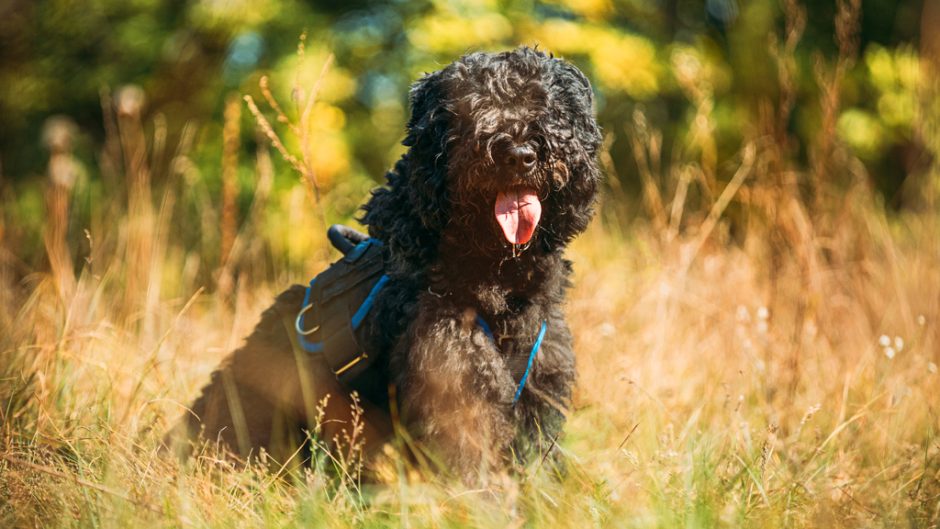
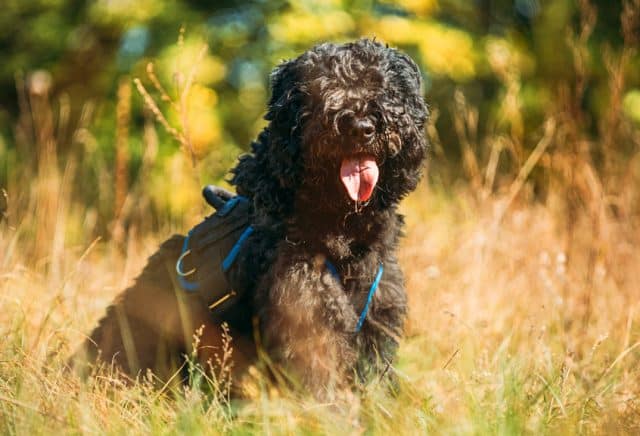
The Bouvier des Flandres
The dogs of Flanders Fields

In the early evening, I’m walking along a trail with my Bouvier des Flandres, Griffin. He is ahead, moving smoothly and quickly with his habitual mile-eating trot. The trail curves, and briefly he disappears from sight. Suddenly I hear a high-pitched shriek. A jogger appears around the corner, clutching his chest melodramatically. “Oh, my god!” he gasps, “I thought it was a bear!” Griffin, unperturbed by the man’s reaction, waits calmly while the man recovers his dignity, but positions himself solidly between the two of us.
People frequently have this “Bear!” reaction to Bouviers and it never ceases to amuse me. How many bears have you seen trotting purposefully along on well-peopled trails? It is true that Bouviers have a distinctive, rolling, bear-like gait. It is also true that Bouviers, like bears, tend to carry their heads low to the ground, and they are also shaggy, and black, and large. But they aren’t that large.
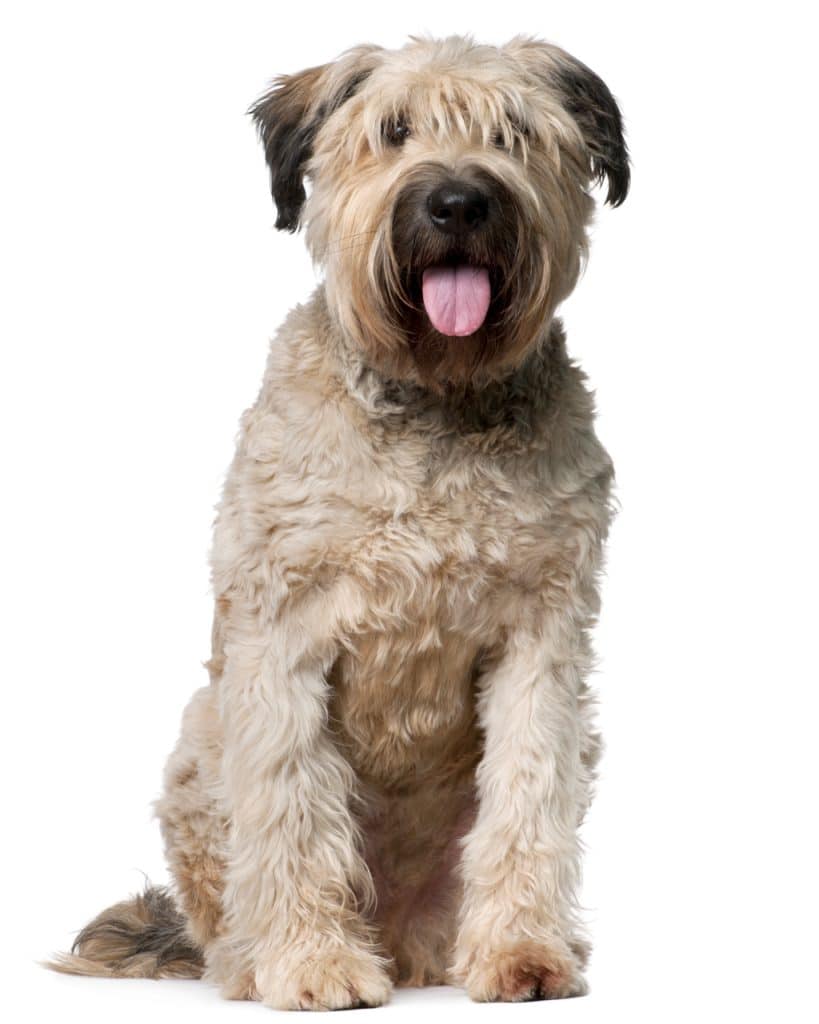
Life on White/Bigstock
In spite of first impressions, Bouviers are in fact medium-sized dogs, only slightly bigger than Labrador Retrievers. The ideal male Bouvier measures about 26 to 27 inches at the shoulder and weighs around 95 pounds-much less than even a small black bear. The female is about an inch shorter and weights proportionately less. While much larger Bouviers are not uncommon, substandard oversize dogs lose the agility so essential for correct and harmonious motion. They also tend to suffer from physical problems related to poor structure, and tend not to live as long as their average-sized counterparts.
Bouviers are rough-coated and most commonly black-brindle, but they may also be grey-brindle or even fawn; and some may have little white stars on their chests. They are square dogs with relatively short backs and thickset bodies, presenting an overall impression of power without clumsiness. The characteristic beard and moustache make the head appear massive. The ears are generally cropped into a triangular contour that is proportional with the head and which contribute to the characteristic Bouvier look. Some owners leave their Bouviers’ ears uncropped, but most still prefer the look and the ease of care of cropped ears; it’s far easier to keep cropped ears dry inside and free of debris. Likewise, Bouviers generally have docked tails for practical reasons: docked tails don’t get stepped on, crushed or run over by people or animals.
A Bouvier projects a sense of presence-an indefinable air of calm self-assurance that commands immediate respect from people and dogs alike. He needs no accolades or acknowledgment, as he knows who he is and he likes himself. He is typically easygoing, rational and prudent; but the fire in his eyes reveals energy, audacity and a willingness to act if necessary. Ordinarily unflappable, it takes a great deal to upset or provoke him, but once provoked he won’t be easily intimidated or made to back down. But though fearless, he is neither vicious nor vindictive; he will apply the minimum amount of force necessary to deal with a situation He’s more likely to prevent a burglar from leaving with the loot than to savage him (or her) during the break-in. This balance between aggressive protectiveness and respect for other creatures is a key characteristic of the Bouvier; and as a result they are often used in the French, Dutch and Belgian military and police forces. The Victoria, B.C., police department has also used Bouviers on its dog squad.
The Bouvier des Flandres originated as a distinct breed at the end of the 19th century, in the agrarian communities of western Belgium (Flanders). A working breed, it was bred to fulfill utilitarian functions: to control and defend livestock, and to protect family and property. During World War II, Bouviers demonstrated their bravery and intelligence on the battlefield and on the home front. So fearlessly did they confront the impossible odds of wartime Europe that the breed itself was almost extinguished. But thanks in part to the selfless courage of a few Bouvier owners who risked their lives to smuggle dogs out of Europe, the breed survived-however it took until the 1960s for the breed to fully recover. Today there are many reputable and respected Bouvier kennels in Europe and North America providing quality dogs for show, work and companionship.
The breed’s original herding/guarding function is the key to understanding the Bouvier’s spirit. He does not perceive himself to be a servant to his owner but, rather, a working partner with whom he shares the responsibility of caring for the well-being of the family. For a Bouvier, human companionship is essential. He does not tolerate being neglected or isolated; a neglected or mistreated Bouvier may become a rowdy and obnoxious bully.
An owner prepared to handle the intelligent and perspicacious Bouvier is someone who is assertive and confident enough to gain and maintain the dog’s respect, and experienced enough to train the dog without breaking his spirit or trying to alter his basic nature. A Bouvier can be stubborn and even devious in getting his own way, but handled properly, he can be taught to do almost anything. He will happily track and perform search and rescue, he will pull a cart full of kids, herd cows, sheep or ducks-and no one who witnesses the phenomenal spring and powerful bite of a Bouvier performing protection work can doubt his ability to serve ably as guardian and protector. There is no limit to what a properly bred and raised Bouvier is capable of doing. A pair of Bouviers in Florida does an excellent job as therapy dogs: not only do they alert their mistress of imminent grand-mal seizures, but they protect her physically during the event.
Generally, a Bouvier is happy as long as he can be close to his owner. In the house, he is usually quiet and non-destructive, sheds little, and adapts easily to domestic routine. But despite this versatility, the Bouvier is most certainly not a breed for everyone. Not only must owners be prepared to meet their dogs’ mental and emotional needs, they must also be willing to commit to maintaining the Bouvier’s distinctive signature coat.
Show Bouviers are usually groomed by professional groomers or handlers. Grooming is an important aspect of conformation-show preparation and takes a great deal of experience and expensive equipment. However, it takes dedication to maintain even a companion dog’s coat. This needs to be brushed and combed out once or twice a week. And the beard (which dips into and drags through everything) may also need to be washed with a damp cloth. If the dog is a house dog, every two or three months he must be bathed and his coat clipped to the characteristic Bouvier outline. If he is groomed regularly from puppyhood, he will not mind being handled on a regular basis. Find someone experienced with the breed to help you learn to do a utilitarian clip for yourself, or be prepared for the considerable expense of taking the dog to a grooming salon. Make sure that the groomers you consult actually have experience grooming Bouviers, or (as I found out to my chagrin,) your dog may come home looking like an old man in pyjamas.
However, it isn’t just his coat that makes a Bouvier a challenging breed to own. Before you settle on a Bouvier as your next dog, do go to a few dog shows and meet some of the breeders and their dogs. Breeders are absolutely passionate about their breeds and most have dedicated their lives (and all their money-for there’s very little money in dogs) to producing only the most physically and mentally sound specimens. Buy your puppy from a reputable breeder and you will get all the support and help you could possibly need to raise a wonderful companion, as well as a mentally and physically sound dog.
A well-bred Bouvier is calm, alert, intelligent and supremely confident. But all of these terms fail to convey the essence of this breed’s character or the range of an individual’s personality-a subtle blend of sensitivity and courage, tenacity and outright stubbornness, aloof reserve and dedicated loyalty. A Bouvier will never accept servitude and he requires an owner who is willing to be a partner rather than master. His strength, size, gruff appearance, intelligence, fidelity to his master, and attachment to the family with whom he lives, make him an extraordinary guardian, protector and companion-and an enormous responsibility. But if you have the time and energy that this breed requires and you find yourself inclined toward a Bouvier, you may find yourself joining the ranks of Bouvier addicts: never again will you settle for less-and like someone once said about potato chips, you probably won’t be satisfied with just one!
» Read Your Breed For more breed profiles, go to moderndogmagazine.com/breeds
Join the newsletter and never miss out on dog content again!
"*" indicates required fields
By clicking the arrow, you agree to our web Terms of Use and Privacy & Cookie Policy. Easy unsubscribe links are provided in every email.
